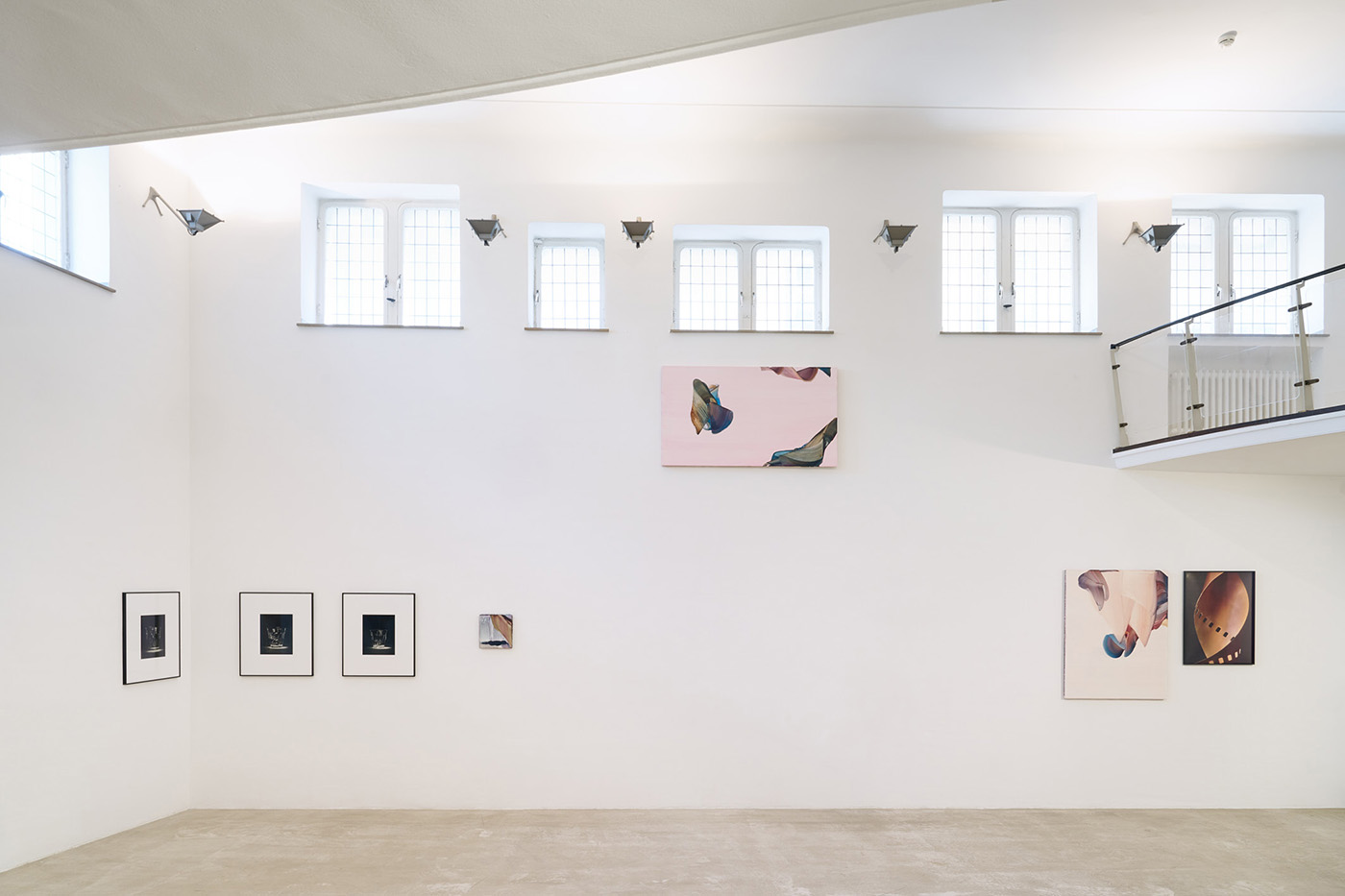
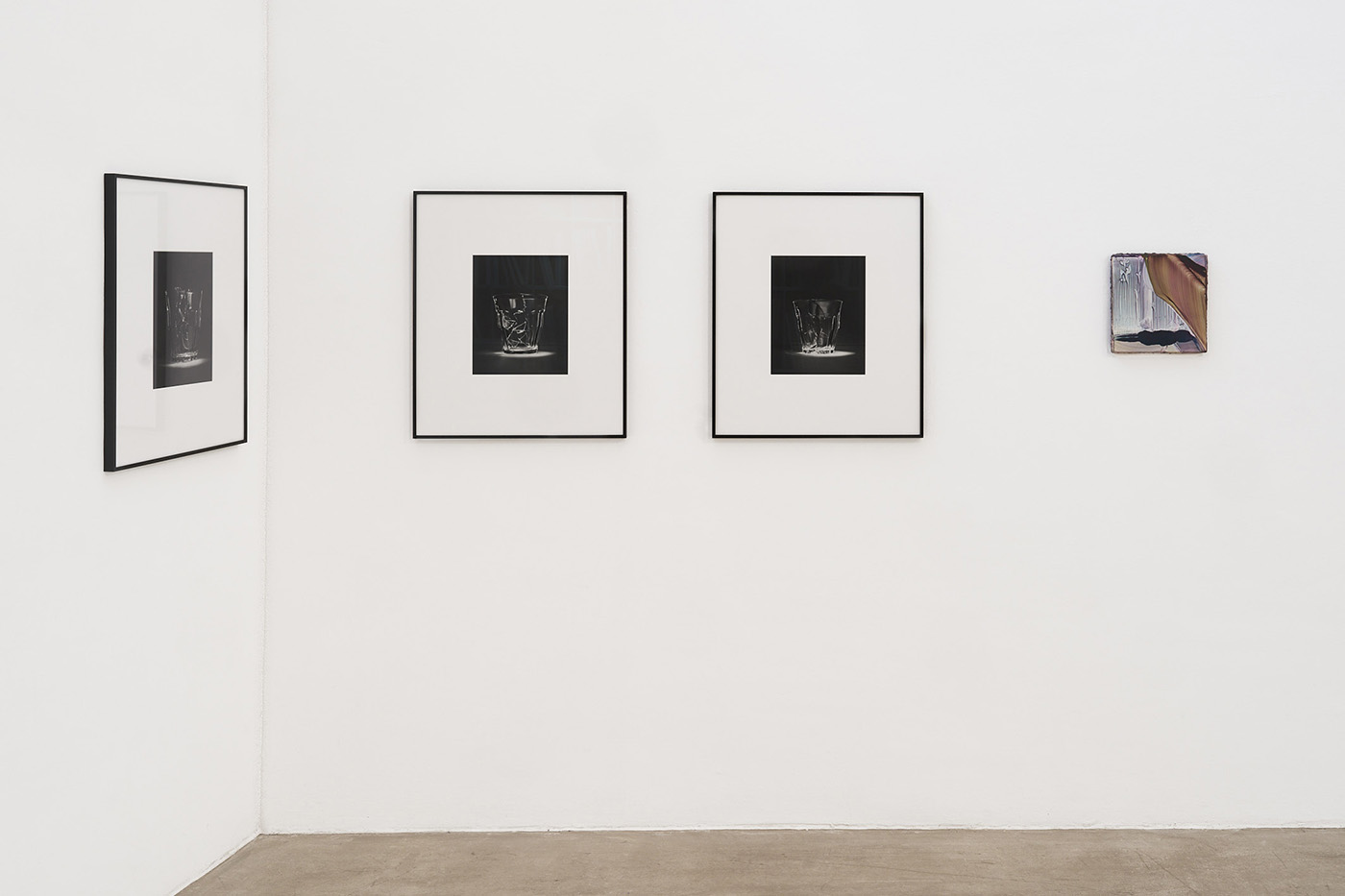

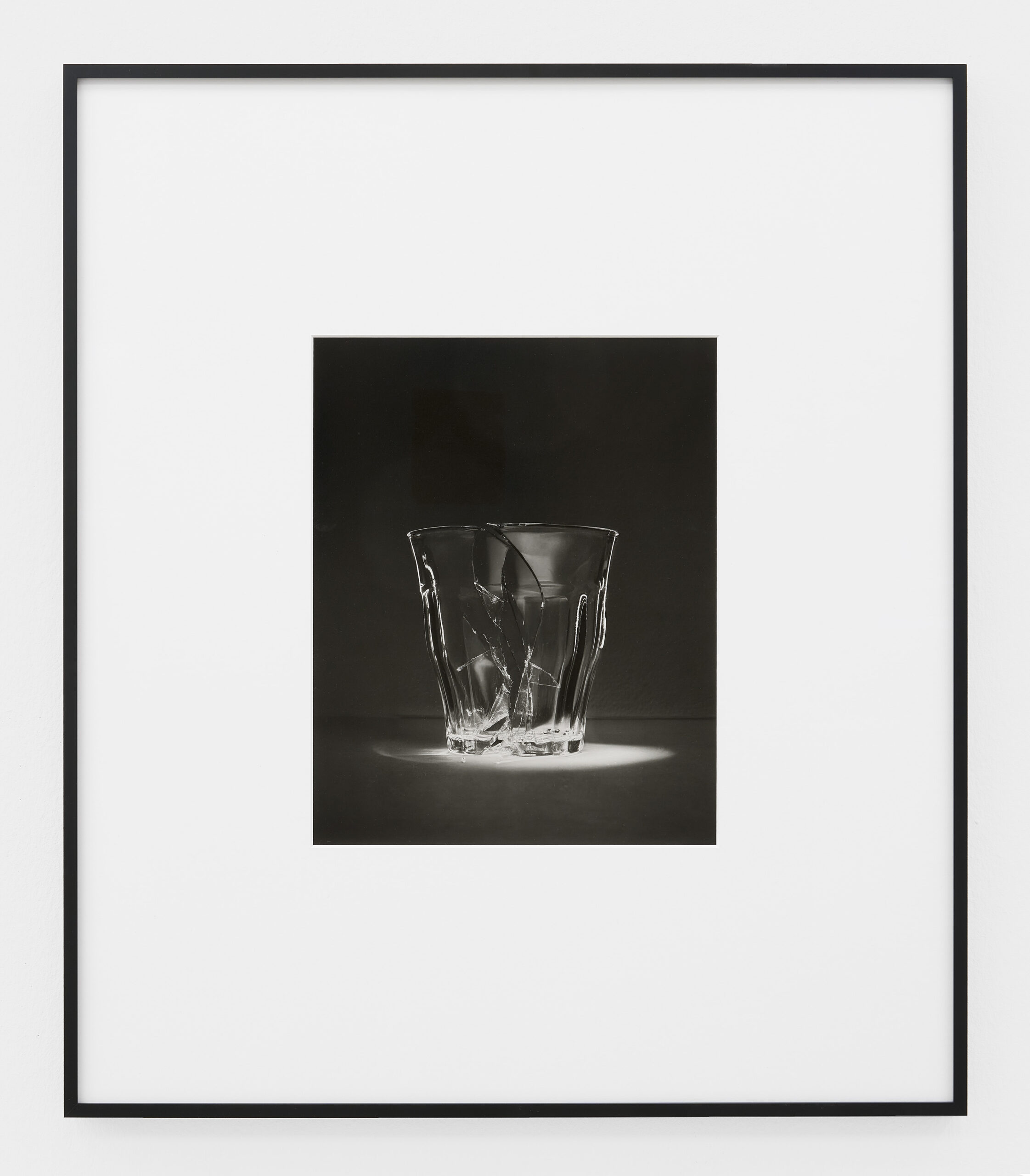
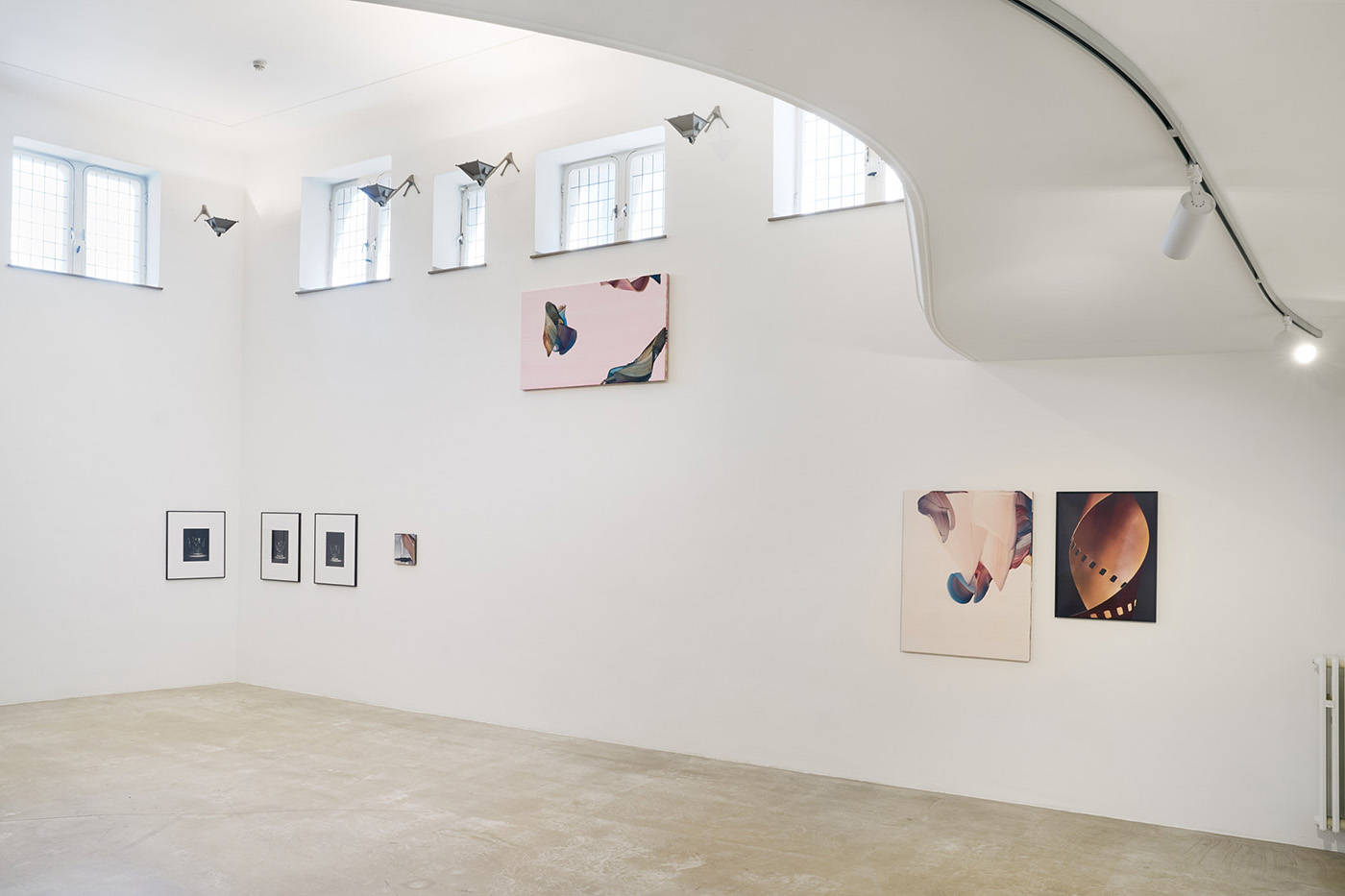
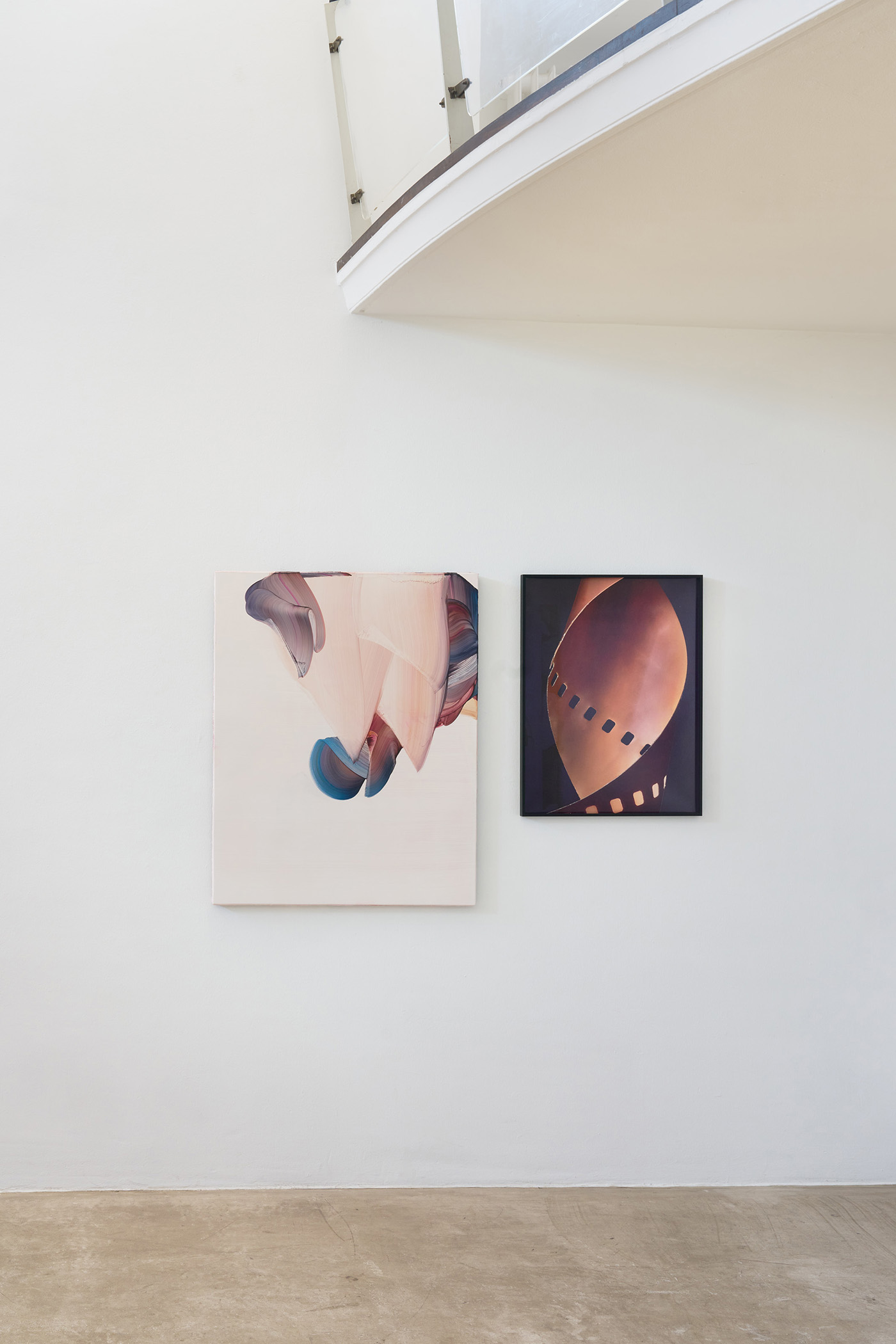


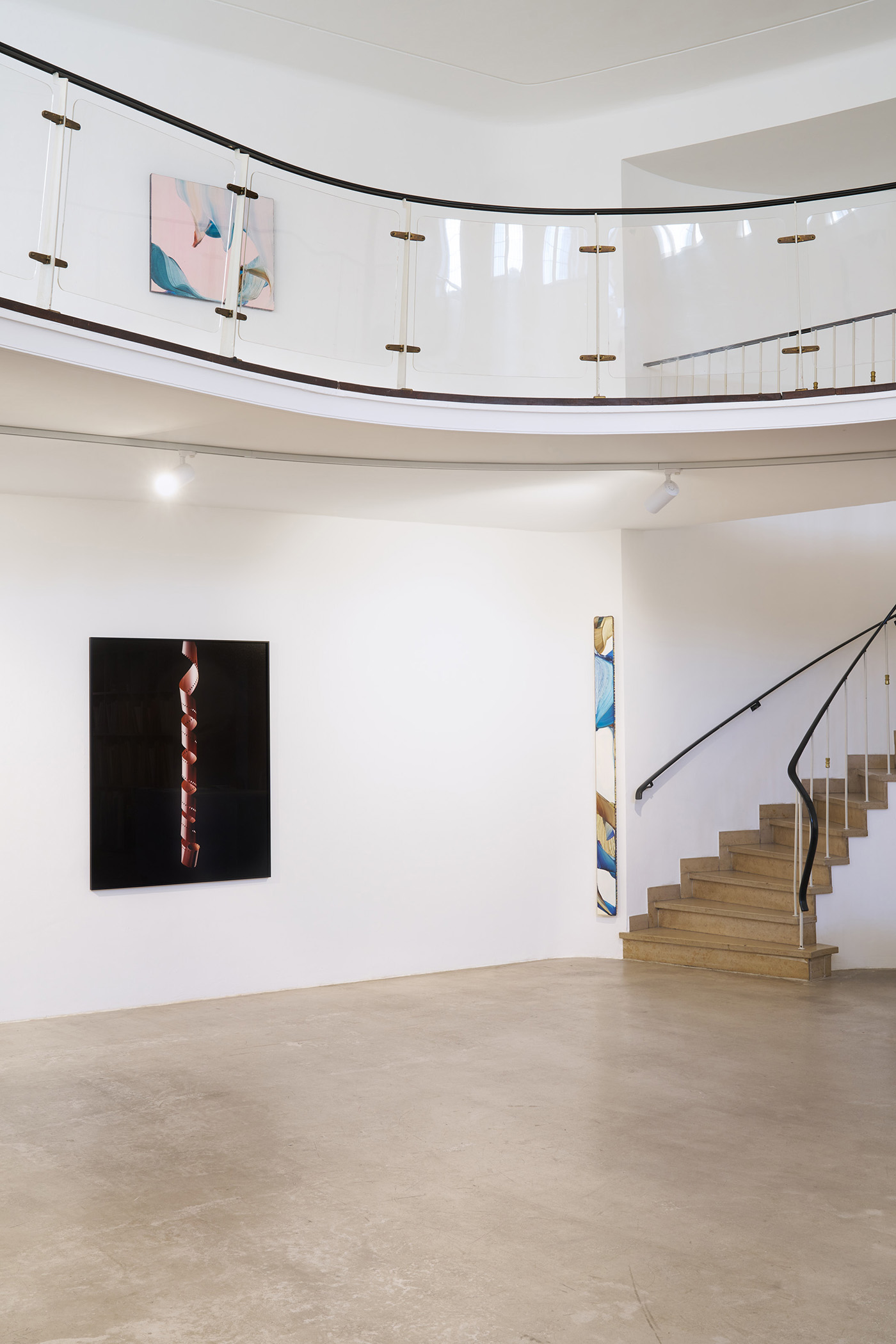
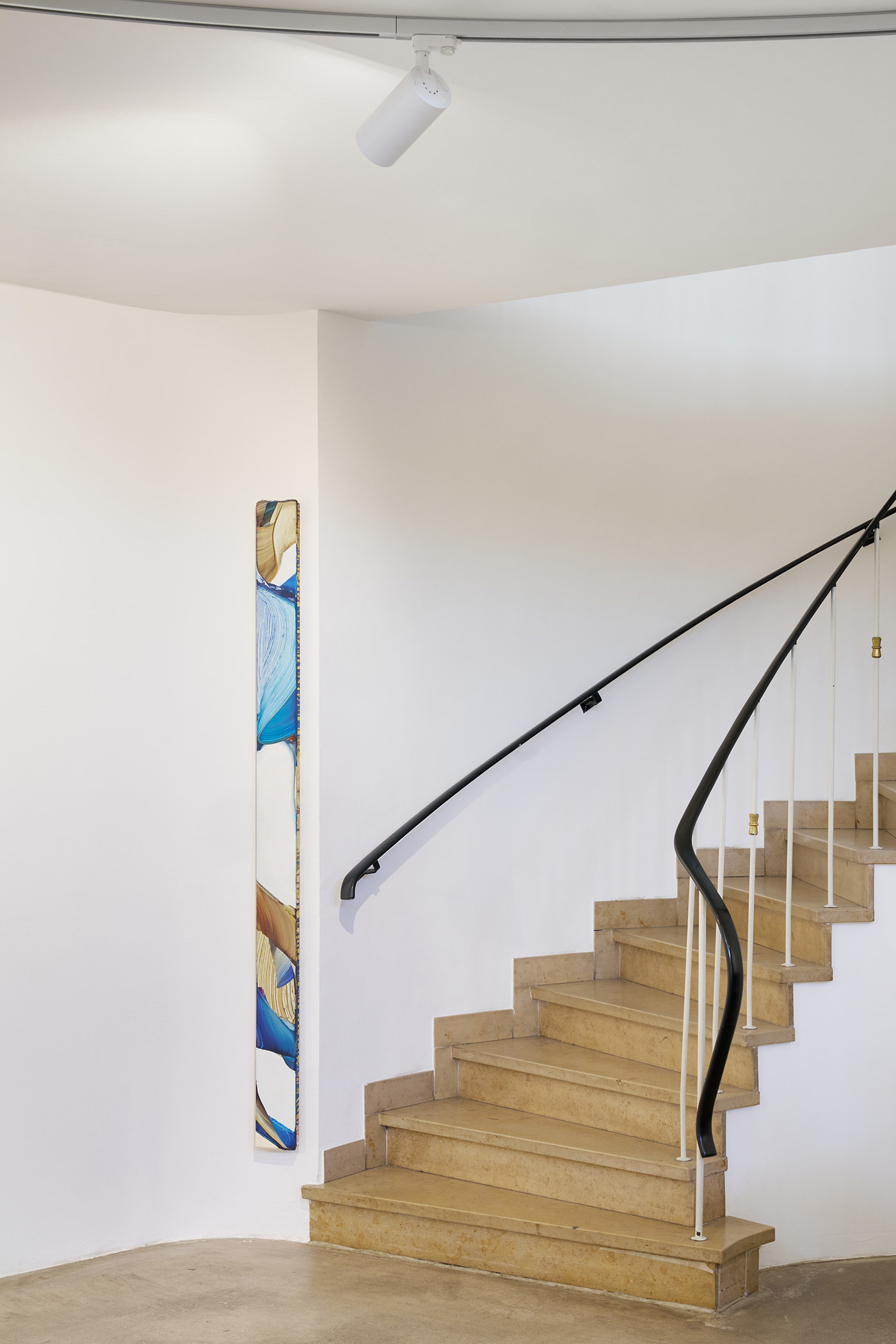

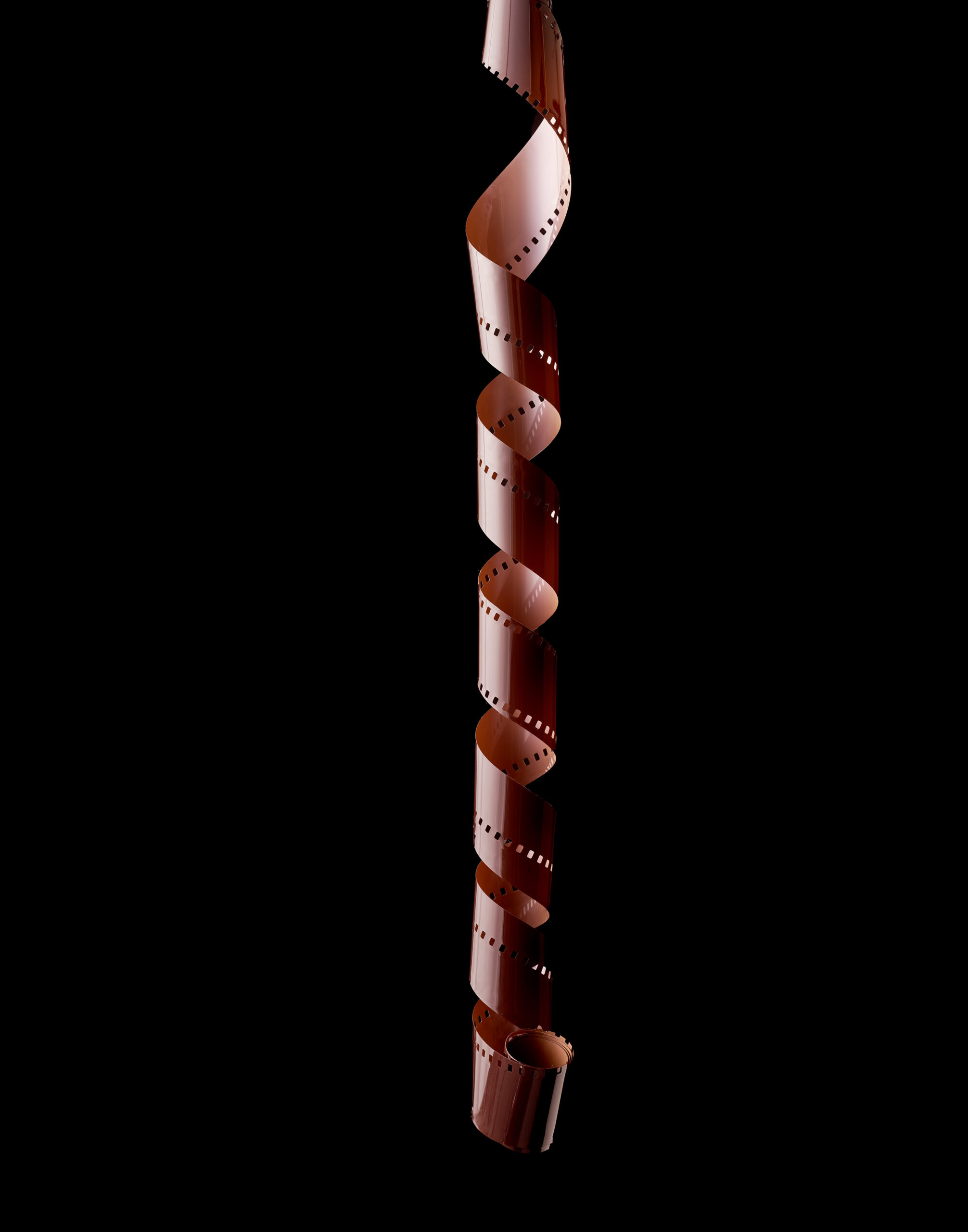
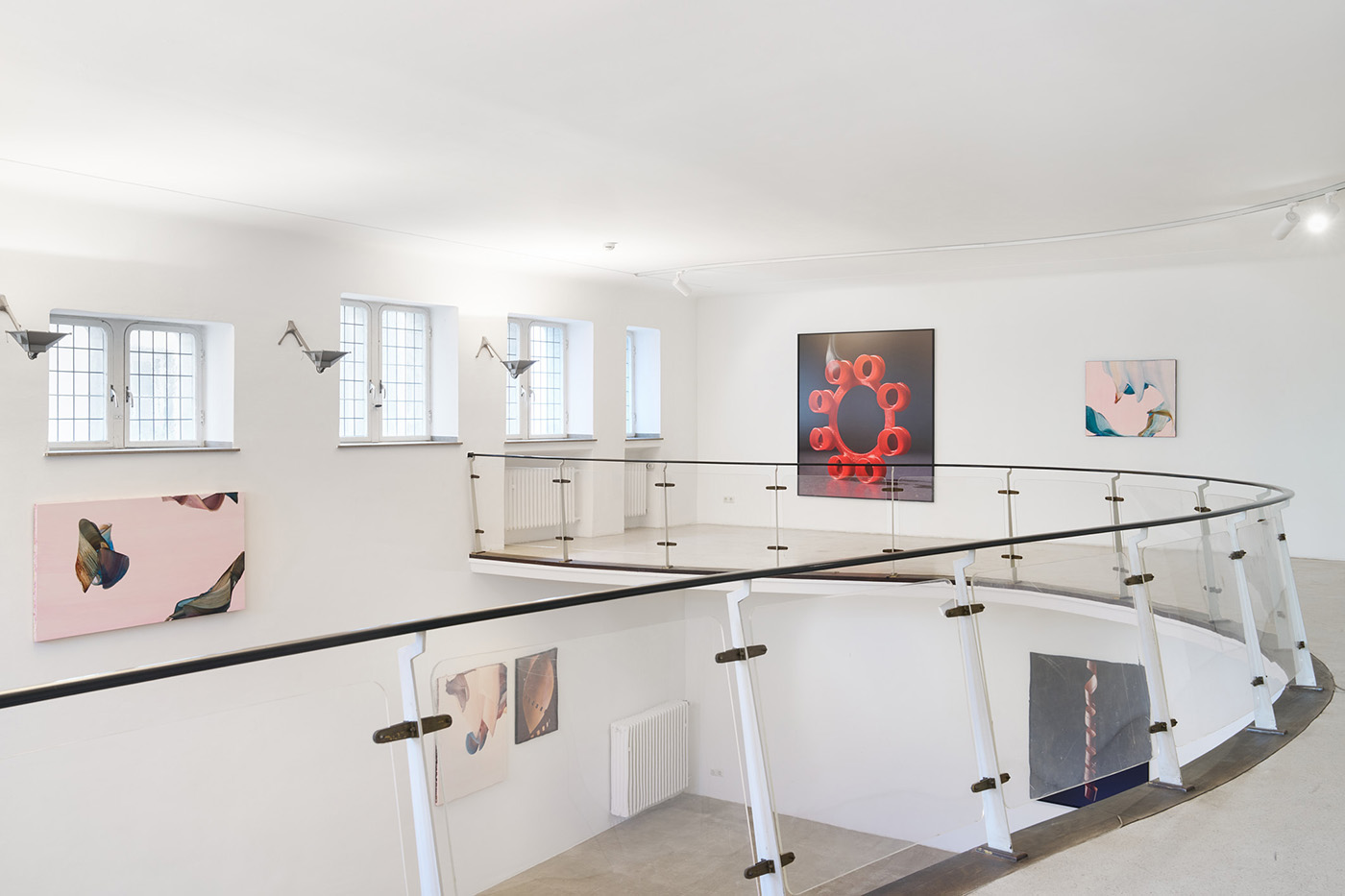


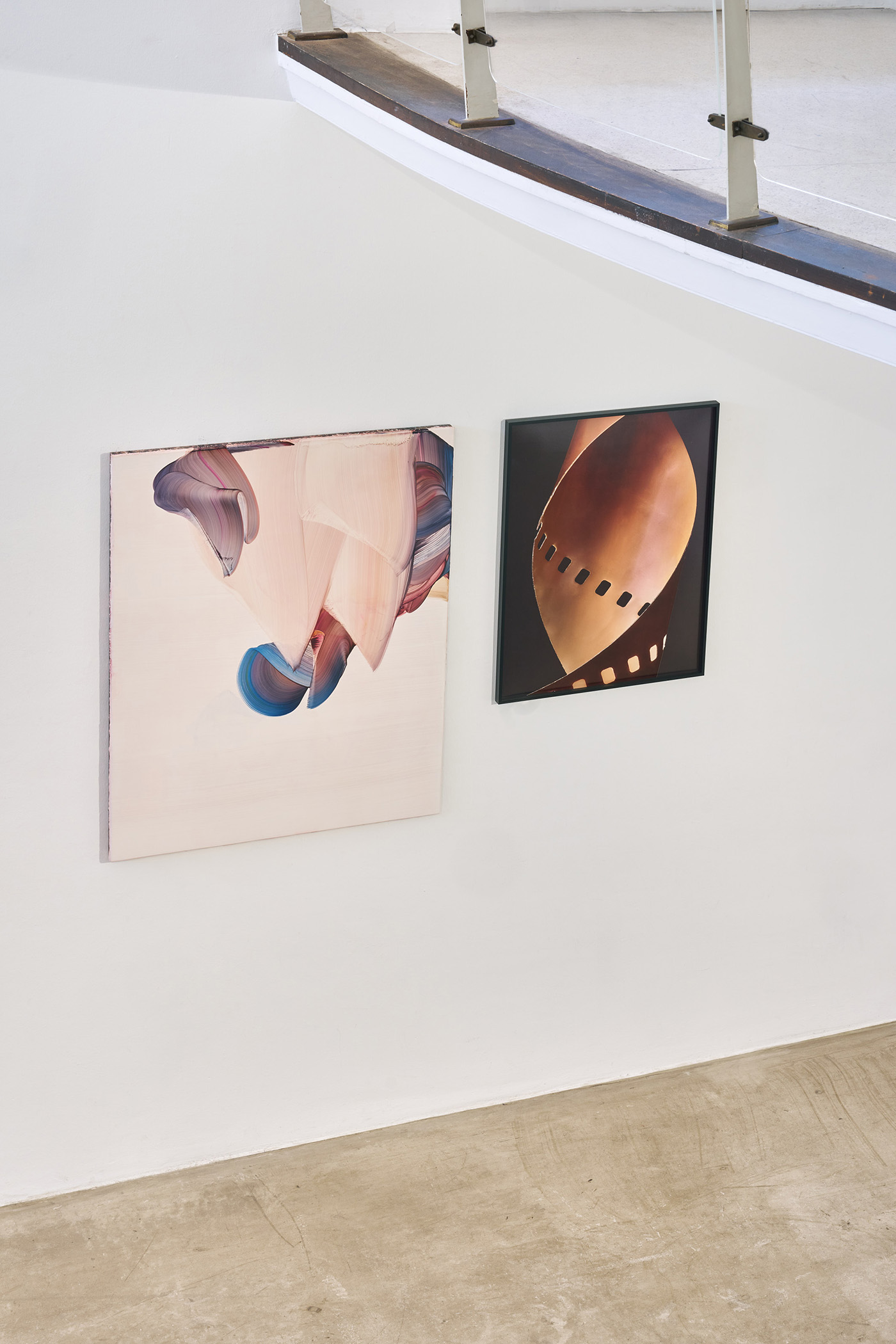
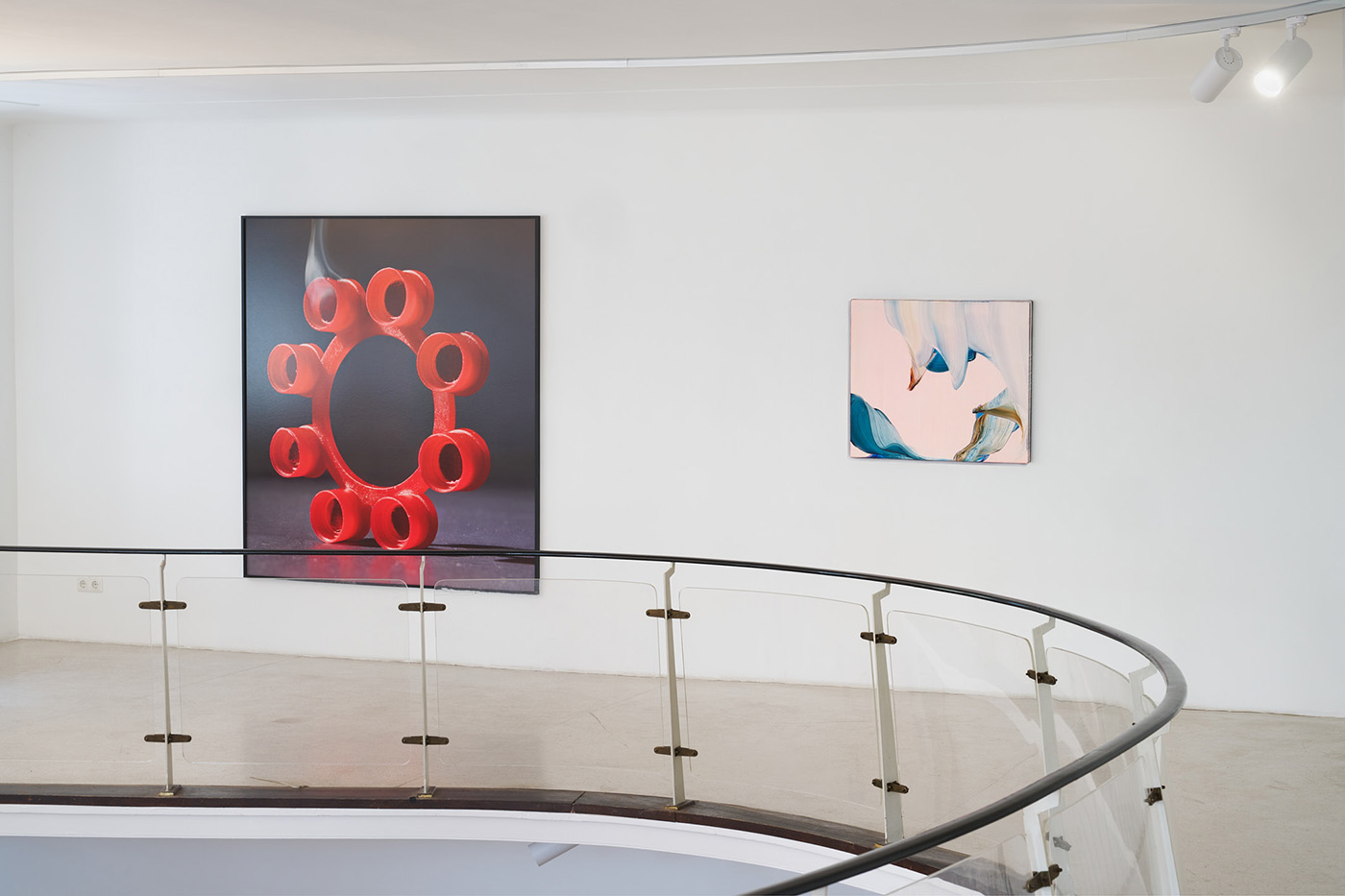
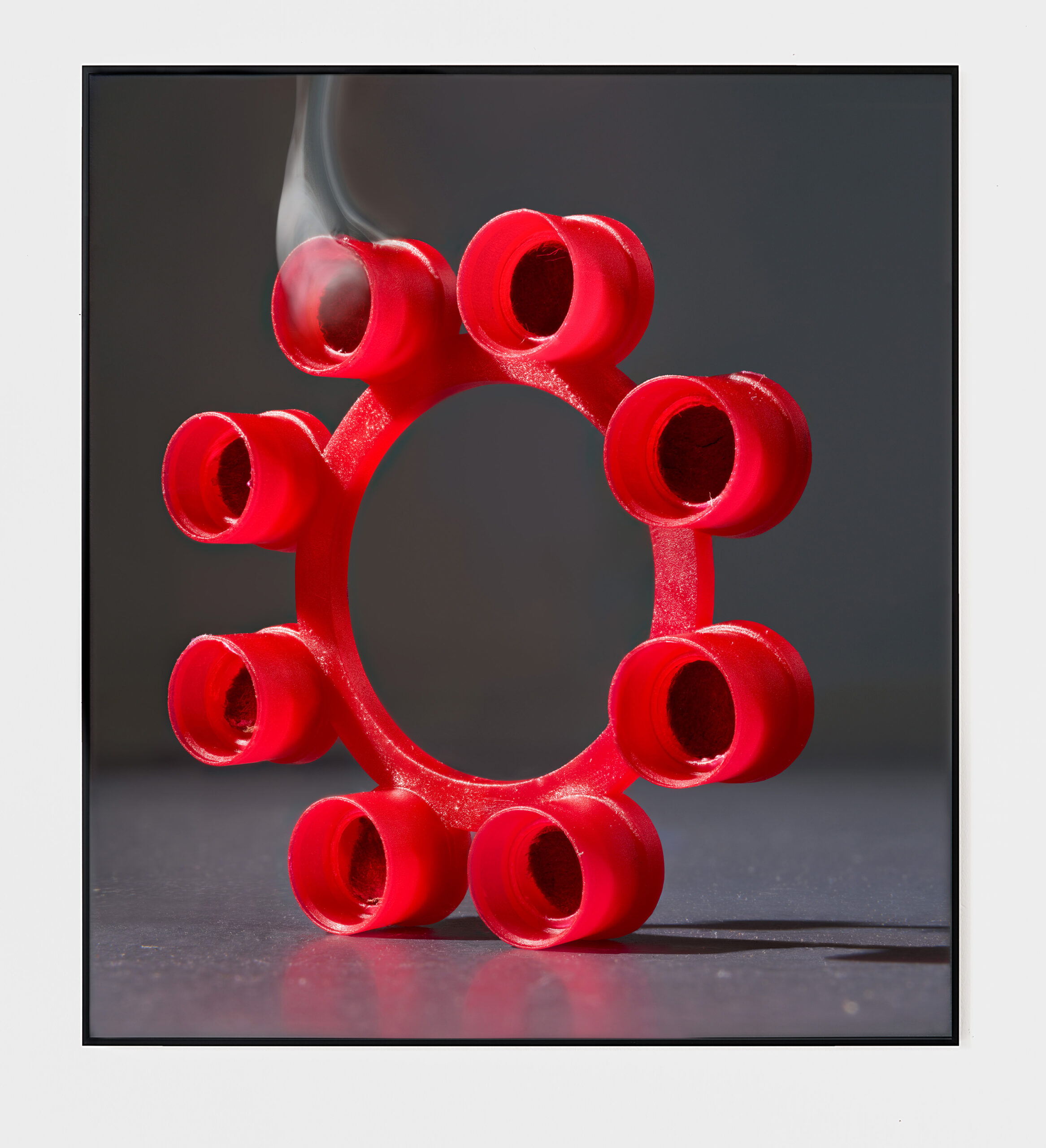
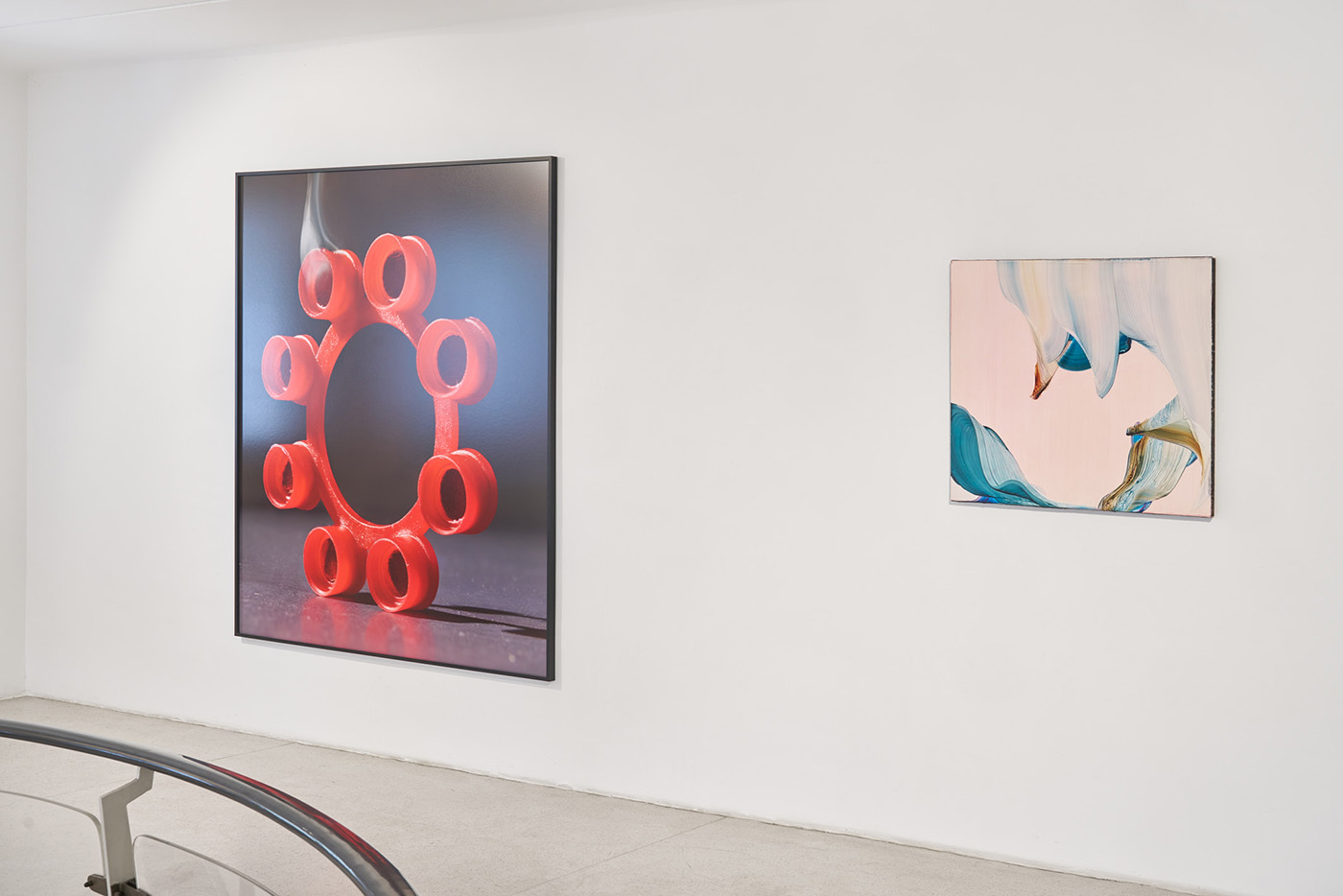
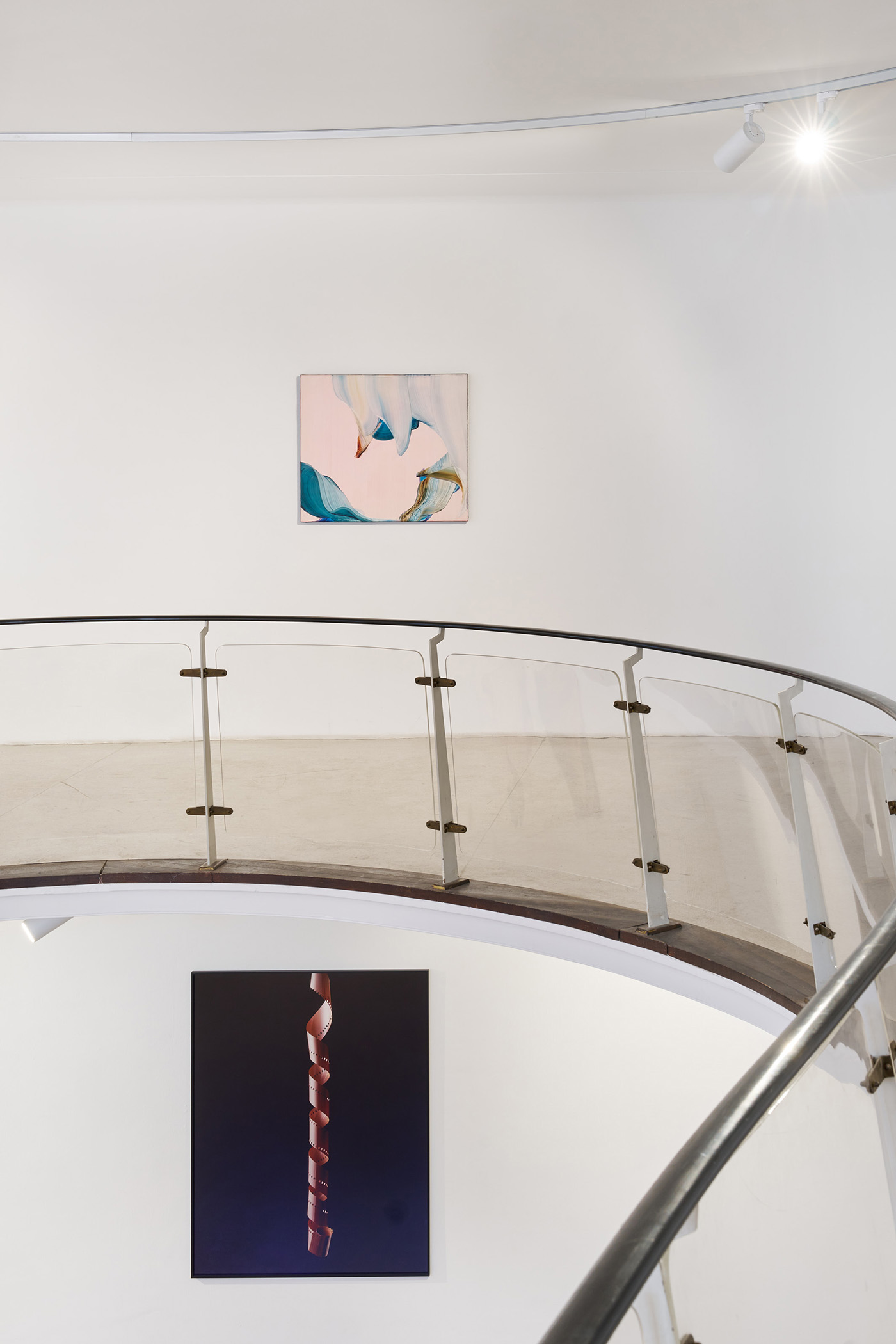
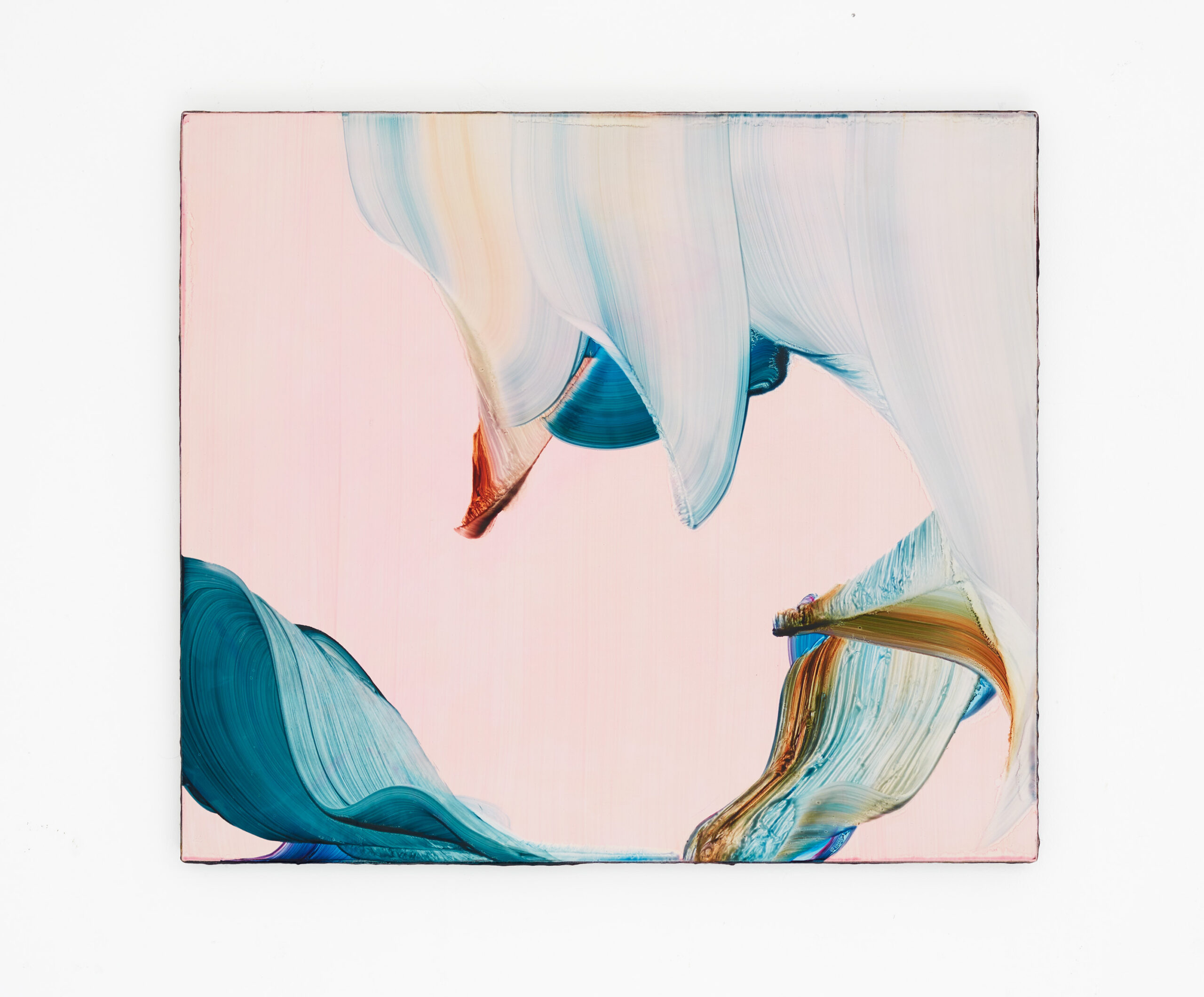
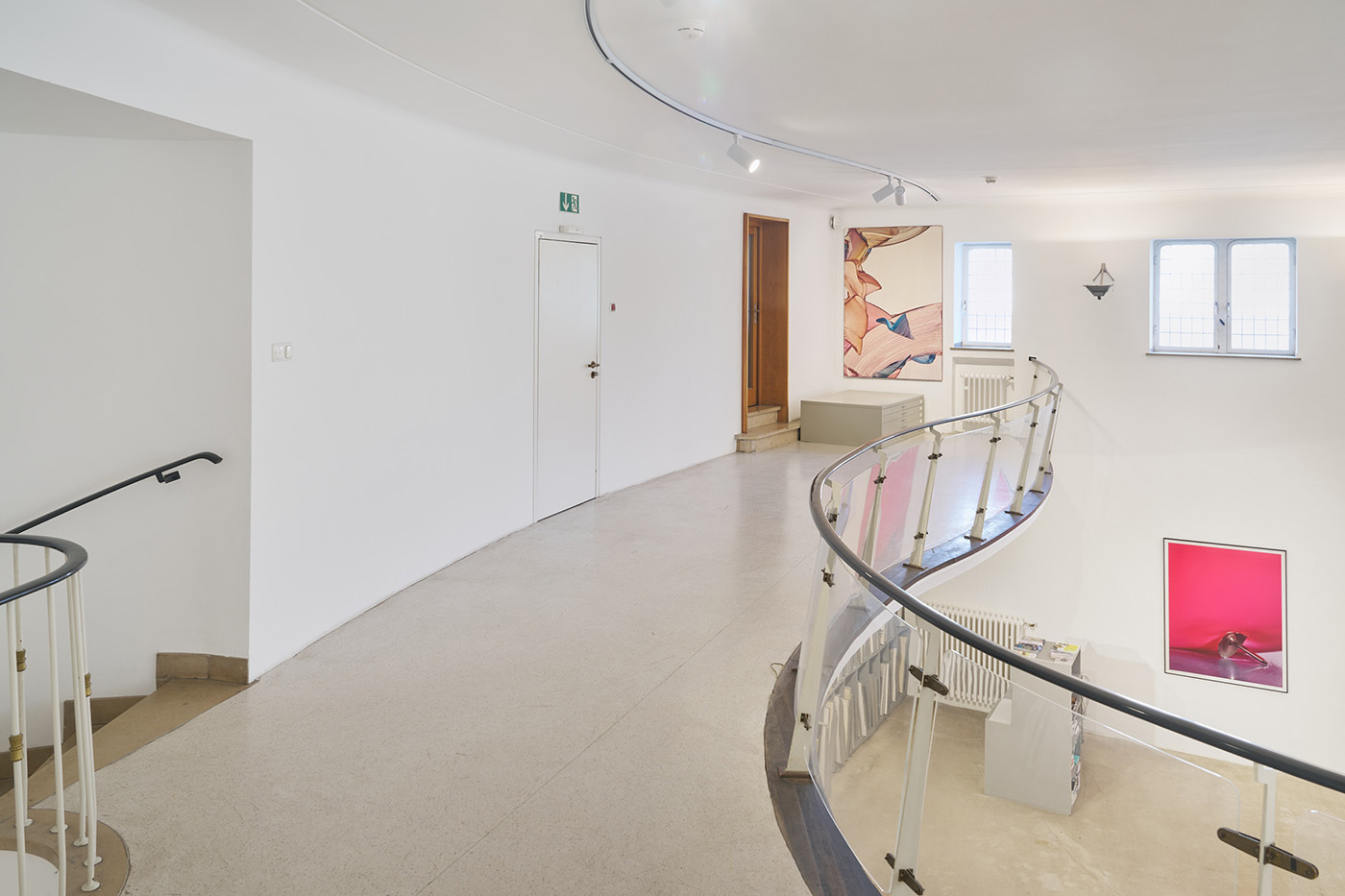
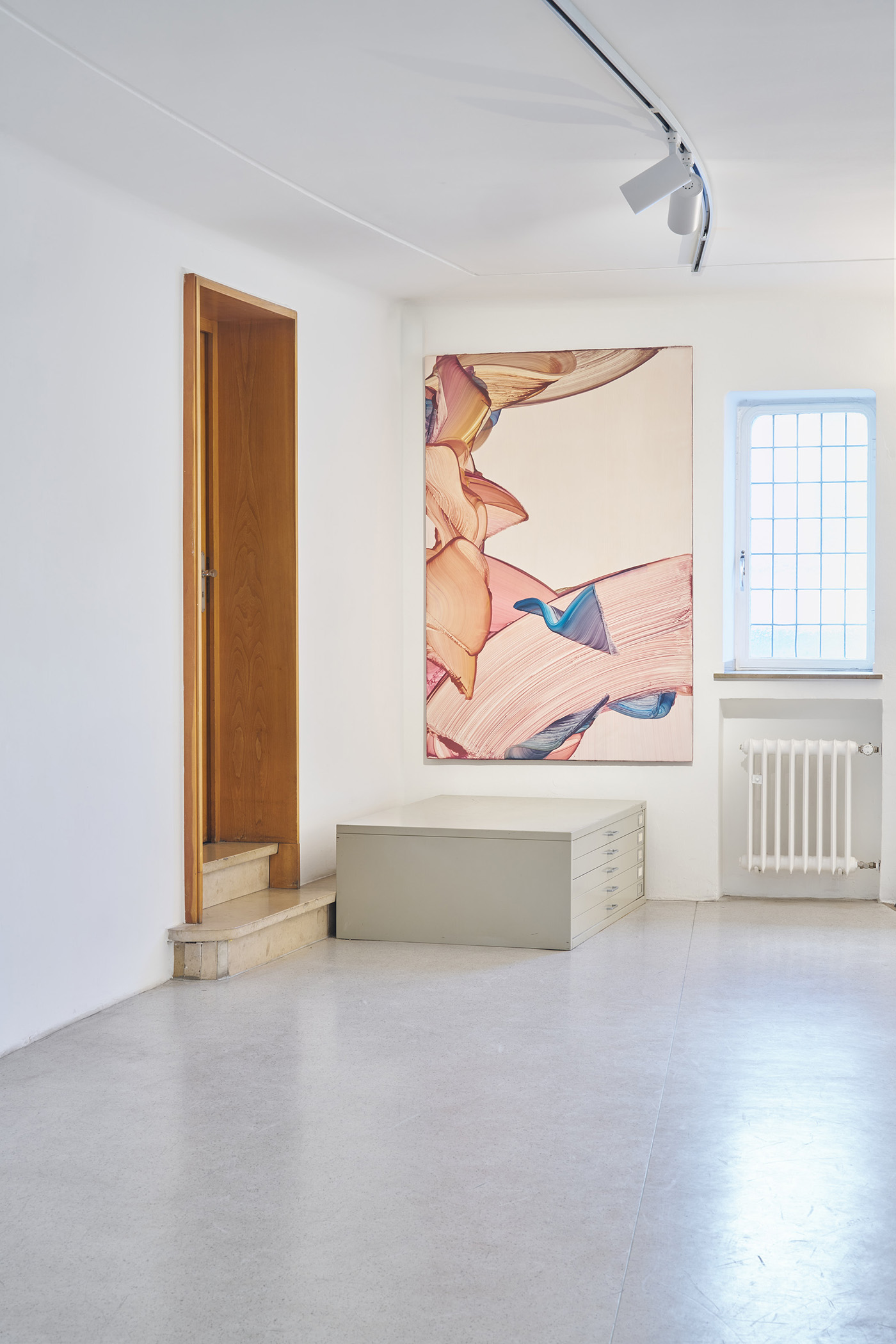

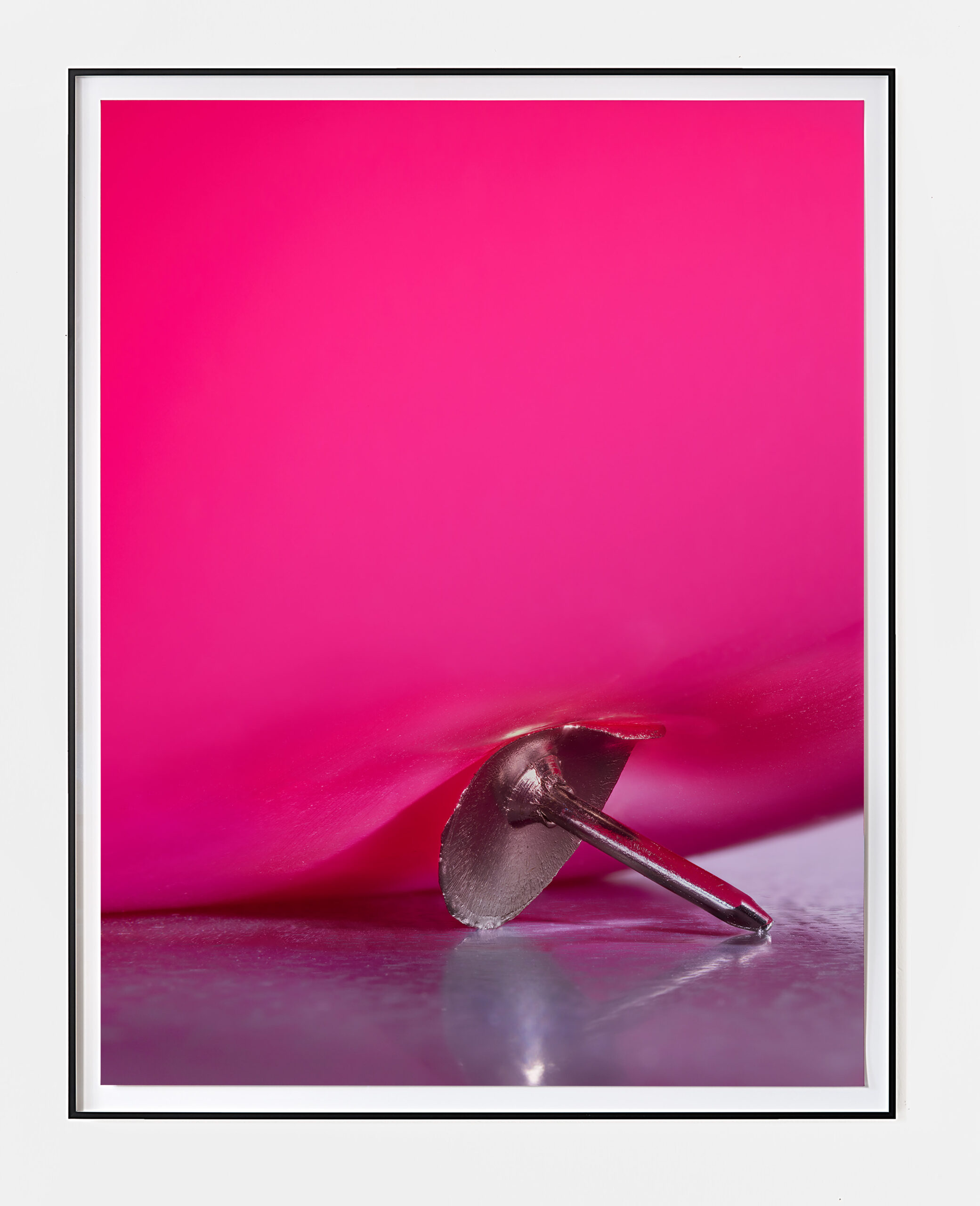
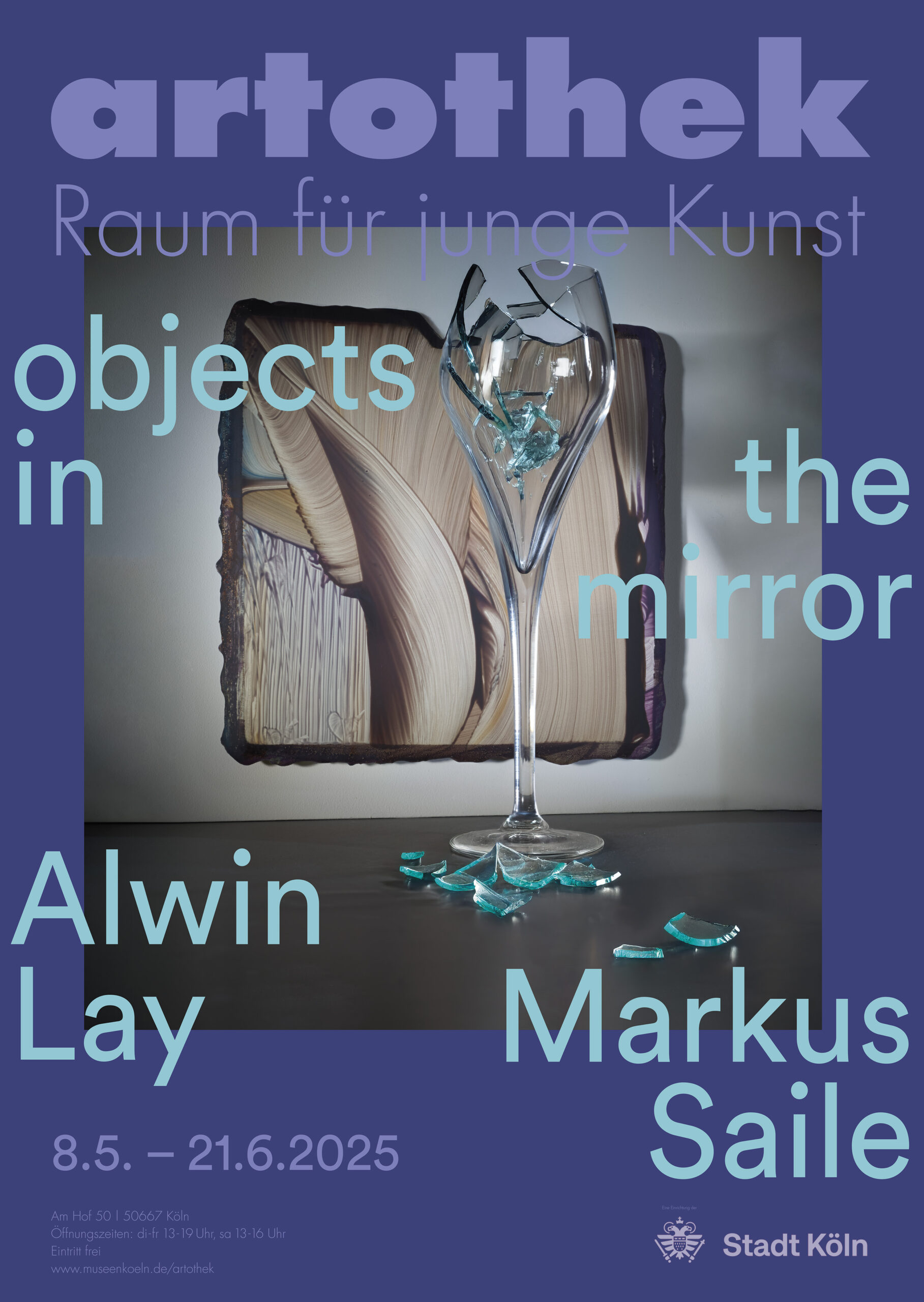
DE
„Objects in the Mirror“ bringt die Fotografien von Alwin Lay und die Malerei von Markus Saile in einen spannungsvollen Dialog. Ihre Arbeiten eint eine fragile Zeitlichkeit, in der Ereignisse wie angehalten wirken – als würde man einen flüchtigen Moment betrachten, der gerade vergangen ist und zugleich noch nachhallt, wie ein Echo im Raum. Der Titel „Objects in the Mirror“ bezieht sich auf auf den Schriftzug „Objects in the mirror are closer than they appear“, der als Warnhinweis auf amerikanischen Rückspiegeln zu finden ist. Wirken die Arbeiten von Alwin Lay und Markus Saile auf den ersten Blick durch ihre unterschiedliche Medialität (Fotografie und Malerei) entfernt, macht die Ausstellung jedoch inhaltliche Parallelen sichtbar, die Ihre Werke miteinander verbinden.
Im täglichen Gespräch in ihren benachbarten Ateliers stellen die beiden immer wieder fest, wie viele inhaltliche und strukturelle Überschneidungen ihre Arbeiten aufweisen. Für beide endet das Bild nicht am Bildrand, und die Auseinandersetzung mit dem Ausstellungsraum, der Architektur und deren Geschichte wie auch der Dialog zwischen den Arbeiten spielen eine entscheidende Rolle.
Zeitliche Strukturen wie Dauer und Momente, in denen sich etwas im Bild ereignet, sind elementar für beide Ansätze. In Sailes Bildern schafft die (Re-)Inszenierung malerischer Gesten räumliche und zeitliche Strukturen, in denen Verweise auf digitale Räume, filmische Aspekte und die Malereigeschichte mitschwingen. Hingegen entsteht das sichtbare Resultat bei Lay aus vielen unsichtbaren Entscheidungen und Handlungen verschiedener, genau aufeinander abgestimmter Momente. Die ihr zugeschriebene medienspezifische Indexikalität wird hier von der Fotografie entkoppelt.
Bei beiden handelt es sich somit nicht um einen Moment im Sinne eines kurzen Zeitabschnitts, sondern vielmehr um „ein Moment im Kontinuum“. Bei Lay wird dieser Kontext noch dadurch verstärkt, dass die Objekte vor einem scheinbar neutralen Hintergrund stehen, der sie von einem bestimmten Ort loslöst. Dennoch verweisen die weißen Wände, grauen Böden und monochromen schwarzen Hintergründe direkt auf den White Cube oder die Black Box: Räume, die nicht wirklich neutral sind, sondern mit Werten und Erwartungen aufgeladen. Einerseits ahmen Lays Werke das isolierte Kunstobjekt in einem White Cube nach, andererseits bekennen sich diese Objekte zu ihrer Eigenständigkeit. Ein weiterer wichtiger Aspekt, der die Arbeiten der beiden Künstler verbindet, ist das Spiel mit dem Bild als Bühne, die einer Inszenierung oder Aufführung Raum gibt. Während bei Lay die Bühne als unspezifischer Ort den Ausstellungsraum ins Bild holt, dramatisieren bei Saile die gestischen Eingriffe den Bildraum im Sinne einer performativen und theatralen Situation.
Im Malprozess schafft Saile mit einer Pinselbewegung Volumen, ähnlich dem Extrusionsprozess in 3D-Programmen. Anstatt eine Reihe von Punkten zu einer Linie zusammenzufügen, wie es bei der perspektivischen Zeichnung der Fall ist, erzeugt ein Pinselstrich in einer einzigen Geste eine Ebene. In einer Werkgruppe schweben diese Gebilde vor fast neutralen Räumen, als wären sie freigestellt. In einigen neuen Bildern arbeitet Markus Saile mit Störungen im Pinselduktus, die vergleichbar mit digitalen Glitches Irritationsmomente schaffen. In seiner neuen Werkgruppe „Picardie“ lässt Alwin Lay Gläser der Marke Duralex durch eine KI zerbrechen. Die Bilder sind in einem klassischen Verfahren in Schwarz-Weiß auf Barythpapier belichtet und thematisieren auf diese Weise die vermeintliche Authentizität der Fotografie als Beweismittel. Doch beim genauen Hinsehen merkt man, dass die Scherben konstruiert sind und dadurch das Verhältnis zwischen künstlerischer und generierter Autorschaft sich zuspitzt.
EN
„Objects in the Mirror” brings Alwin Lay’s photographs and Markus Saile’s paintings into an exciting dialogue . Their works are united by a fragile temporality in which events seem to be frozen – as if one were looking at a fleeting moment that has just passed and yet still reverberates, like an echo in space. The title “Objects in the Mirror” refers to the words “Objects in the mirror are closer than they appear”, which can be found as a warning on American rear-view mirrors. At first glance, the works of Alwin Lay and Markus Saile appear distant due to their different media (photography and painting), but the exhibition reveals parallels in content that connect their works.
In daily conversations in their neighboring studios, the two artists repeatedly discover how much their work overlaps in terms of content and structure. For both of them, the image does not end at the edge of the picture, and the examination of the exhibition space, the architecture and its history as well as the dialogue between the works play a decisive role. Temporal structures such as duration and moments in which something happens in the picture are fundamental to both approaches. In Saile’s pictures, the (re-)staging of painterly gestures creates spatial and temporal structures in which references to digital spaces, cinematic aspects and the history of painting resonate. Lay’s visible result, on the other hand, emerges from many invisible decisions and actions of different, precisely coordinated moments. The media-specific indexicality attributed to it is decoupled from photography here.
Both are therefore not a moment in the sense of a short period of time, but rather “a moment in the continuum”. In Lay’s work, this context is reinforced by the fact that the objects are set against a seemingly neutral background that detaches them from a specific location. Nevertheless, the white walls, gray floors and monochrome black backgrounds refer directly to the white cube or the black box: spaces that are not really neutral, but charged with values and expectations. On the one hand, Lay’s works imitate the isolated art object in a white cube; on the other, these objects acknowledge their independence.
Another important aspect that links the works of the two artists is the play with the image as a stage that provides space for a production or performance. While Lay’s stage as an unspecific location brings the exhibition space into the picture, Saile’s gestural interventions dramatize the pictorial space in the sense of a performative and theatrical situation. In the painting process, Saile creates volume with a brush movement, similar to the extrusion process in 3D programs. Instead of joining a series of dots to form a line, as is the case with perspective drawing, a brushstroke creates a plane in a single gesture. In one group of works, these shapes float in front of almost neutral spaces, as if they were cut out.
In some of his new paintings, Markus Saile works with disturbances in the brushstroke that create moments of irritation comparable to digital glitches. In his new group of works “Picardie”, Alwin Lay has Duralex brand glasses shattered by an AI. The images are exposed in a classic black and white process on baryth paper and in this way address the supposed authenticity of photography as evidence. On closer inspection, however, one realizes that the shards are constructed and thus the relationship between artistic and generated authorship comes to a head.
The work of Alwin Lay (*1984, Romania) has been shown in numerous exhibitions in galleries and museums. Recent solo exhibitions include Christine König Galerie Vienna, Alice Folker Gallery Copenhagen, Museum für Photographie Braunschweig (cat.), Nino Mier Gallery, L.A. He was part of several photographic survey exhibitions such as ‘SUBJEKT und OBJEKT. FOTO RHEIN RUHR’, Kunsthalle Düsseldorf, “The Next Generation”, Museum Morsbroich, Leverkusen, “gute aussichten delux”, Haus der Fotografie, Deichtorhallen Hamburg. His works have also been shown in solo exhibitions at Kunstverein Siegen, Kunstverein Leipzig, NAK- Neuer Aachener Kunstverein (cat.), Max Ernst Museum, Brühl and in group exhibitions at Kunstmuseum Bonn, CAC La Traverse, Paris, MUMOK, Vienna, Gallery Thomas Erben, N.Y., Basis, Frankfurt, Document, Chicago, Kunsthalle Recklinghausen, Kunsthalle Münster, Bundeskunsthalle Bonn, Kunstverein für die Rheinlande und Westfalen, Düsseldorf, among others. Alwin Lay was a resident at the Villa Aurora in Los Angeles in 2016 and received a working grant from the Stiftung Kunstfonds in 2020.
The works of Markus Saile (*1981 in Stuttgart) have been shown in numerous exhibitions in galleries and museums. Recent solo exhibitions include ‘Pipes’, Galeria Scala, Poznań, ‘Everything Folds’, DREI, Cologne, ‘EDGE TO EDGE’, Mai 36 Galerie, Zurich, ‘Scala’, A+B Gallery, Brescia, ‘separate | related’, NAK Neuer Aachener Kunstverein and ‘Das und gleicht dem Chamäleon’, Galerie Markus Lüttgen, Düsseldorf. He was part of the survey exhibition ‘Jetzt! Young Painting in Germany’ at the Kunstmuseum Bonn, Museum Wiesbaden, Kunstsammlungen Chemnitz-Museum Gunzenhauser and Deichtorhallen, Hamburg. His works have also been shown in group exhibitions at the Paik Hae Young Gallery, Seoul, Bel Amis, Los Angeles, Museo Licini, Ascoli Piceno, Italy, Pinacoteca Emilio Notte, Ceglie Messapica, Italy, Markus Lüttgen, Düsseldorf, Temporary Gallery, Cologne, Galerie Crone, Vienna, Mai 36, Zurich, Arp Museum Rolandseck, Strabag Kunstforum, Vienna, DREI, Cologne and RECEPTION, Berlin, among others. Markus Saile was a resident at Schloss Balmoral in 2014, in 2019 he received the Strabag Artaward Recognition Prize and in 2020 the working grant from the Stiftung Kunstfonds.